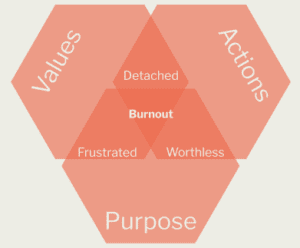
Harnessing the Power of Downtime: An In-Depth Look at Motivating Teams in Slower Seasons
In today’s fast-paced corporate landscape, downtime can seem like an anomaly. But as business ebbs and flows, it’s inevitable that periods of reduced activity will arise. While initially perceived as concerning, such periods can be metamorphosed into phases of immense growth and rejuvenation. Drawing upon insights from The Hive, let’s take a comprehensive dive into the world of team motivation during slower seasons.
Contextualizing the Quiet: The Socio-economic Implications
Understanding the nature of downtimes in business requires a broader lens than merely examining one’s internal operations. The interplay of global events, market forces, and sector-specific trends often shape these quieter periods.
Industry-specific Analysis
Every industry has its cycles. For instance, retail might experience downtimes post-holidays, while tourism might dip in off-peak seasons. A deep dive into your industry’s trends can offer predictions and patterns, helping to anticipate and prepare for these slower periods.
Global Market Dynamics
The global market is an intricate web, and events in one part of the world can ripple across to another. Economic recessions, political upheavals, technological disruptions, or even global health crises can impact markets in unexpected ways. Staying attuned to these shifts ensures that businesses aren’t caught off-guard.
Socio-cultural Shifts
Changes in societal values, cultural trends, and consumer behaviour can significantly impact demand. The rise of conscious consumerism, for instance, transformed many industries, pushing them towards sustainable solutions. Recognising such shifts early can be a key differentiator.
Technological Evolution and Disruptions
As digital transformation accelerates, many industries face the dual challenge and opportunity brought about by technological advancements. Automation, AI, and other tech trends might reduce demand in certain areas while opening new avenues in others.
Competitive Landscape Analysis
A lull might not be just about broader trends; it might also be a reflection of increased competition or industry saturation. A thorough competitive analysis can help businesses identify areas for differentiation and innovation.
Regulatory and Policy Changes
Changes in government policies, trade regulations, and international treaties can impact business operations. Companies that stay ahead, understanding potential policy shifts and adjusting in advance, can navigate downtimes more effectively.
Before crafting strategies to handle downtime, a comprehensive understanding of its root causes is essential. It’s not enough to recognize that business has slowed; it’s crucial to understand why. With a finger on the pulse of global, industry-specific, and local trends, businesses can not only navigate these quiet periods more effectively but can also anticipate and prepare for future challenges and opportunities.
Downtime: A Breeding Ground for Evolution
When viewed through a visionary lens, downtimes aren’t setbacks; they’re opportunities. A window to recalibrate, innovate, and grow in ways the daily hustle might not always permit.
Skill Augmentation: Delving into Uncharted Territories
- Expert Engagements: Consider inviting industry experts for specialised sessions. This can provide teams with new perspectives and knowledge they wouldn’t have accessed otherwise.
- Interdisciplinary Learning: Encourage your team to explore skills not strictly within their job description. A marketing professional learning basics of coding or a tech professional diving into consumer psychology can lead to holistic growth and unique problem-solving approaches.
Strategy Revamp: Beyond Conventional Metrics
- Scenario Planning: Engage in exercises envisioning different future scenarios. This helps teams be prepared for various market situations, from best-case to worst-case scenarios.
- Feedback Integration: Often, in the thick of projects, feedback from various stakeholders (clients, ground-level team members, partners) might be noted but not thoroughly integrated. This downtime can be used to amalgamate this feedback into strategies.
- Resource Reallocation: Evaluate if your current resources – human, technological, and financial – are optimally allocated. Downtimes offer a chance to shuffle and experiment without immediate high stakes.
The Innovation Drive: Nurturing a Culture of Disruption
- Intrapreneurship Programs: Encourage employees to think like ‘intrapreneurs’, essentially treating segments of the business as their own startup. This can lead to breakthrough ideas and solutions that a regular process might not yield.
- Collaborative Hackathons: Host inter-departmental hackathons where mixed teams tackle challenges outside their usual purview. It’s a unique fusion of diverse skills and perspectives, often leading to surprising innovations.
- Open Idea Platforms: Create platforms where any employee, irrespective of their role or seniority, can share ideas. This democratisation of innovation ensures that the business doesn’t miss out on ground-breaking ideas that might come from the most unexpected quarters.
Human-centric Leadership: Beyond the Transactional Paradigm
- Existential Exploration: Allow your team members space to revisit their roles, ambitions, and career trajectories. Facilitate sessions where they can articulate their visions and align them with the company’s objectives.
- Strengthening Interpersonal Bonds: From outdoor team-building retreats to in-house workshops on effective communication, focus on crafting a tightly-knit team that can seamlessly collaborate when activity surges.
- Holistic Well-being Initiatives: Beyond physical health, focus on mental and emotional wellness. Consider inviting guest speakers or counselors for sessions on stress management, mindfulness, or emotional intelligence.
Downtime can be a catalyst if its potential is realised and harnessed. It’s a call to step back, reflect, and then leap forward with renewed vigor and clarity. With strategic skill enhancement, a fresh look at existing strategies, and fostering a culture of relentless innovation, businesses can not only weather the quiet periods but emerge from them stronger, more resilient, and poised for exponential growth.
Operational Renewal: Resetting the Work Paradigm
In periods of slowdown, the visionaries don’t just see a drop in activity. They see a blank canvas, an opportunity to repaint their operational tapestry with strokes of improvement, innovation, and integration.
Efficiency Analysis: The Deep Dive into Processes
- Process Mapping: Begin by visually representing each process. This visual journey can highlight stages that are more convoluted than they need to be.
- Automation Potential: Identify tasks that are repetitive and time-consuming. These might be ripe for automation, freeing up manpower for more value-driven activities.
- Vendor and Tool Evaluation: Often, businesses stick to tools or vendors out of habit. Re-evaluate your external partnerships and tools to ensure you’re getting the best ROI. Consider running pilot tests with alternative solutions to compare efficacy.
Cross-Role Acclimatisation: Building Bridges within the Organisation
- Role Rotation Programs: Beyond just shadowing, consider implementing a role rotation program. This allows team members to not just observe but actively participate in different roles, leading to hands-on experience.
- Departmental Workshops: Facilitate sessions where departments present their functions, challenges, and success stories. This fosters mutual respect and a more integrated approach to problem-solving.
- Inter-departmental Projects: Encourage projects that require collaboration between departments. This not only leads to more holistic solutions but also breaks silos, ensuring smoother operations in the long run.
Feedback Forums: The Heartbeat of Continuous Improvement
- Open Door Days: Designate certain days where leaders maintain an open-door policy, encouraging team members to walk in with feedback, ideas, or concerns. This informal setting can lead to more honest conversations.
- Digital Feedback Platforms: Use digital tools where employees can anonymously provide feedback. The cloak of anonymity often leads to more candid and valuable insights.
- Thematic Focus Groups: Organise focus groups around specific themes, like technology, workplace culture, or client engagement. Deep diving into one area can yield detailed insights and actionable recommendations.
Operational excellence is not a destination but a journey. Periods of reduced business activity offer the breathing room needed to critically assess, reimagine, and restructure the inner workings of an organization. By refining processes, fostering cross-role understanding, and continuously integrating feedback, companies can ensure that their operational machinery runs smoother, faster, and more efficiently, ready to accelerate when the pace picks up again.
Embracing the Ethos of Deliberate Slow Pacing
In a world where ‘busyness’ is often mistaken for productivity, and where speed is erroneously equated to efficiency, the ethos of deliberate slow pacing offers a refreshingly counterintuitive perspective. Drawing inspiration from the ‘Slow Movement’, which began with the culinary world’s ‘Slow Food’ initiative and then branched into various facets of life, businesses can find a blueprint for intentional, mindful, and quality-centric operations.
Revisiting the Essence of the ‘Slow Movement’
- Quality over Quantity: At the heart of the Slow Movement lies the emphasis on producing quality results rather than maximizing quantity. It’s about diving deeper into tasks, refining them to perfection, and taking pride in the craftsmanship of one’s work.
- Mindfulness in Action: The movement encourages being fully present in whatever one is doing. This mindfulness translates into fewer errors, richer creativity, and a deeper connection with one’s work.
Tangible Steps towards a Slow Paced Work Ethos
- Redefining Productivity Metrics: Instead of focusing on how much is done, recalibrate metrics to how well it’s done. Celebrate depth, detail, and dedication.
- Mindful Mornings: Begin the workday with a session of meditation, reflective journaling, or simply a quiet coffee hour. This sets the tone for a day of focused, present, and intentional work.
- Dedicated Deep Work Periods: Allocate chunks of the workday for uninterrupted, deep work. Encourage employees to switch off notifications, minimise distractions, and dive into tasks.
- Holistic Employee Well-being Programs: Introduce programs focusing on mental well-being, stress management, and mindfulness. The physical, emotional, and mental well-being of employees directly impacts the quality of their output.
Benefits of Embracing Deliberate Slow Pacing
- Enhanced Creativity: A mind that isn’t constantly racing and juggling multiple tasks can delve deeper into creative realms, coming up with innovative solutions and ideas.
- Reduced Burnout: The relentless pace of modern corporate life is a significant contributor to employee burnout. Slowing down, paradoxically, can lead to sustained long-term productivity.
- Stronger Team Connections: When interactions aren’t always rushed, team members form deeper connections, leading to a more collaborative and harmonious workplace.
As the world races ahead, sometimes, the most revolutionary thing a business can do is choose not to race. By embracing the ethos of deliberate slow pacing, companies can create environments where work is not just a series of tasks but a journey of discovery, craftsmanship, and fulfillment. The ‘Slow Movement’ isn’t about inaction; it’s about intentional action. And in that intentionality lies the potential for extraordinary outcomes, both for the business and the individuals who fuel it.
Conclusion
Downtime shouldn’t be a source of alarm but rather a signal to pivot, reflecting and rejuvenating both strategies and team dynamics. With the right perspective and tools, these quiet moments can become profound turning points, setting the stage for future successes.
At The Hive, we’re more than just about driving results; we’re about understanding the nuanced dynamics of team motivation, irrespective of the business cycle. Partner with us to craft strategies that aren’t merely reactive but proactive, ensuring your team remains not just productive, but also inspired and fulfilled. Engage with our experts today, and let’s redefine the potential of downtime together.













































